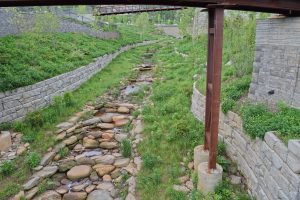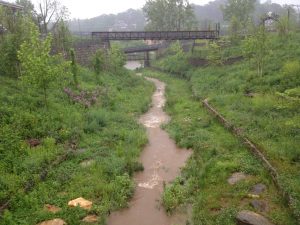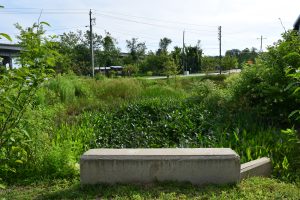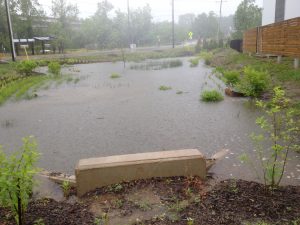When the bottom falls out of the clouds
Being in the mountains, one of our greatest threats with climate change is flooding. Large intense rain events are becoming more common due to the potential of warmer air holding larger amounts of moisture; but what do the mountains have to do with it? Mountains will force moist air from storms up, causing rapid condensation and intense rain events. Meteorologists term some of the most extreme versions of this, cloudbursts, where four inches or more of rain will fall in just one hour. It is expected that cloudbursts will become more frequent as temperatures rise and the air is able to hold more moisture. Cloudbursts are not new, in fact, they have occurred regularly in the Himalayas (think monsoon season in India) since such events have been recorded. What is new is the reach and frequency of these events.
Adaptative and Resilient Planning and Design
It feels like planning for intense rain events is necessary, especially after the amount of flooding we have seen over the last several months and years in WNC. What does this look like? As planners and designers, we see solutions in new design and in retrofits for public land and private land, at the bottom of the watershed and the top of the watershed. Unlike traditional methods such as berms, walls, and piping, utilizing an adaptive, multi-layered system is more resilient and provides benefits beyond stormwater control.


What does an adaptive multi-layered approach look like? It is an approach that works with nature by implementing green and blue infrastructure. It is an approach that designs spaces for multiple functions, to allow for flooding in a safe manner, and for a quicker time for recovery.


Opportunities:
- Place more passive public spaces in flood prone areas that are designed for use as flood water storage and conveyance during intense rain events.
- Retrofit and build streets with green and blue infrastructure to store and convey large volumes of water (focus on storage upstream and conveyance downstream)
- Design to provide ecosystem services and social benefits when spaces are needed for stormwater management during a Cloudburst event.
Challenges
- A large part of the solution is stormwater storage at the top of the watershed, where residents may feel the effects of flooding less often.
- Reframing mindsets that the cost of doing nothing far exceeds the cost of green and blue infrastructure retrofits.
- Working with municipalities and local governments to adopt measures that require designs for resiliency.
If you are interested in learning more about adaptive and resilient planning and design, please feel free to reach out to Equinox at 828.253.6856.
